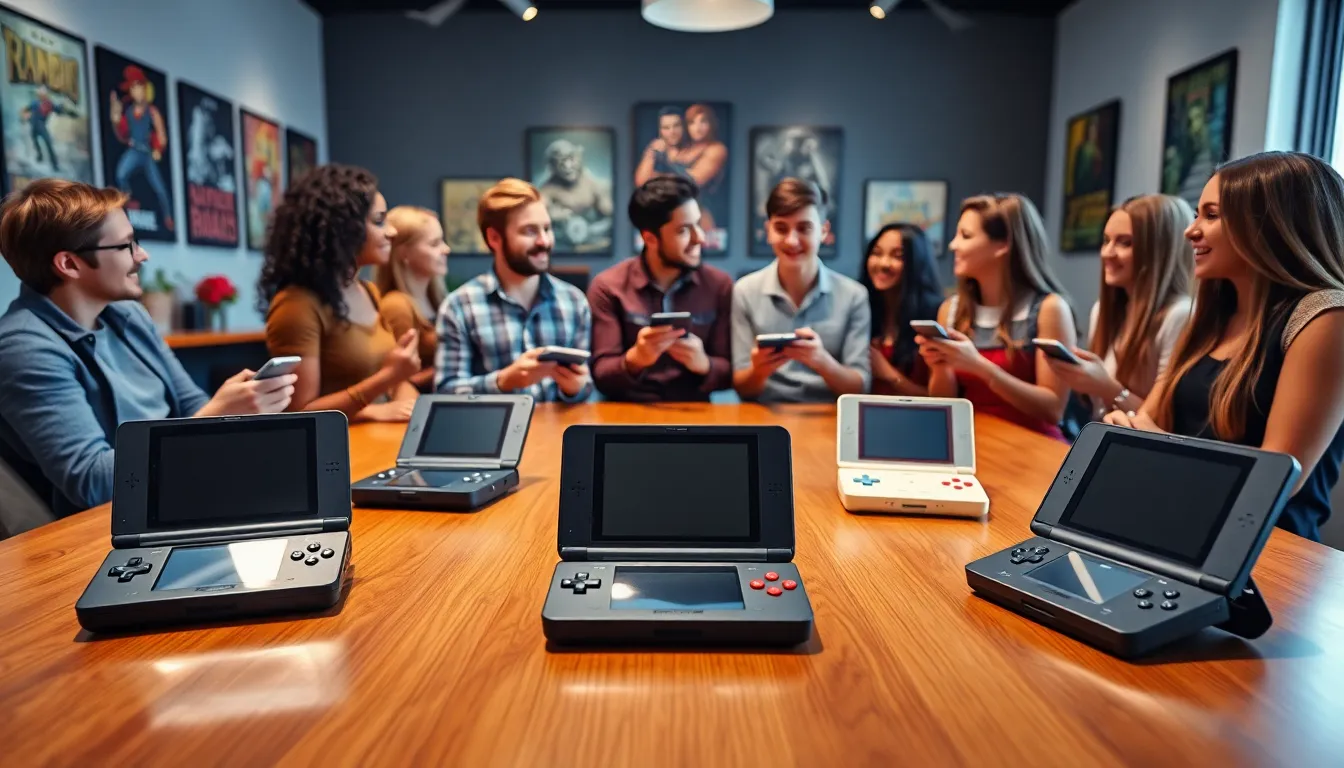Phone:
(701)814-6992
Physical address:
6296 Donnelly Plaza
Ratkeville, Bahamas.

Remember the days when gaming meant huddling around a small screen, tapping buttons until your thumbs begged for mercy? Retro gaming handhelds take us back to those golden moments. In a world saturated with high-definition graphics and complex gameplay, these delightful devices remind us that simplicity often reigns supreme. So, buckle up and prepare for an enlightening exploration of all things retro gaming handhelds.

Retro gaming handhelds are portable devices designed to play classic video games, often featuring a compact screen and buttons reminiscent of the good old days. These gems allow gamers to relive their favorite childhood memories on the go. Just think of them as a time capsule for the gaming world.
Typically, these handhelds include a library of games from older consoles, giving players a chance to experience titles that defined the gaming landscape. From pixelated graphics to catchy chiptunes, retro gaming handhelds distill the essence of nostalgia while providing the convenience of portability.
The journey of handheld gaming started long before the advent of sleek designs and powerful processors. It goes back to the early 1970s with devices like the Microvision, but it wasn’t until the Nintendo Game Boy in 1989 that handheld gaming truly took off. The Game Boy featured interchangeable cartridges, allowing players to easily switch between different games, which was revolutionary at the time.
Following the Game Boy’s success, numerous companies jumped on the bandwagon, creating their versions of handheld consoles. Sega launched the Game Gear, and Atari tried its hand with the Lynx. These devices, though not as successful as the Game Boy, paved the way for future innovations.
As technology evolved, gaming shifted focus from handhelds to home consoles, but the charm of retro handhelds remained, leading to a resurgence in their popularity in recent years.
When discussing retro gaming handhelds, a few names stand out in the crowd. The previously mentioned Nintendo Game Boy remains iconic, but let’s not overlook the wonders of devices like the Sega Game Gear and the Atari Lynx. Today, modern iterations have emerged, such as the Anbernic RG351 series and the Powkiddy X18S, which blend nostalgia with improved tech.
One of the standout devices, the Game Boy Advance, expanded on the original Game Boy with better graphics and an impressive library of games. These handhelds cater to gamers looking for a true experience, offering unbeatable battery life and the charm of classic gameplay.
Many enthusiasts appreciate custom-built handhelds, like the GPD Win. These devices allow players to enjoy retro titles while offering backward compatibility with modern systems, creating a fascinating blend of old and new.
When diving into the world of retro gaming handhelds, several features are essential. Battery life stands at the top of the list. Players want devices that let them indulge in hours of gameplay without constantly plugging in a charger.
Another key feature is screen quality. An ideal retro gaming handheld should have a vibrant display that brings those pixelated characters to life. Also, the device should offer comfortable controls, as no one wants cramped fingers after a marathon gaming session.
Built-in game libraries are also a notable aspect. Many handhelds come pre-loaded with classic titles, eliminating the need for players to track down cartridges. Upgradable firmware is a bonus, allowing players to expand their gaming library and enjoy a seamless experience as new titles become available.
Emulation plays a crucial role in the resurgence of retro gaming handhelds. It allows users to play games from various consoles on a single device by mimicking the hardware of those original systems. This drastically increases the number of games one can enjoy without collecting every vintage console out there.
Many retro handhelds use emulation software like RetroArch or Reicast, enabling them to run titles from systems such as Sega Genesis or Nintendo 64. But, there’s an ongoing debate about the legality and ethics surrounding emulation. While it enables preservation and accessibility of classic games, many companies argue that it undermines their intellectual property. Hence, it’s essential for players to navigate the world of emulation responsibly.
While new advancements in technology are exciting, the essence of retro gaming is worth preserving. Many enthusiasts find joy not just in playing the classics, but in reliving the entire experience, right from the box art to the sounds associated with the startup screens.
Collecting original cartridges and consoles has become a side hobby for many retro gaming fans, leading to the preservation of gaming history. The community’s dedication to keeping retro gaming alive is evident in various online forums and conventions, where fans gather to share tips and showcase their collections.
Also, the rise of indie developers creating retro-style games is exciting. These developers often pay homage to their inspirations, ensuring that the golden days of gaming remain alive for new generations.